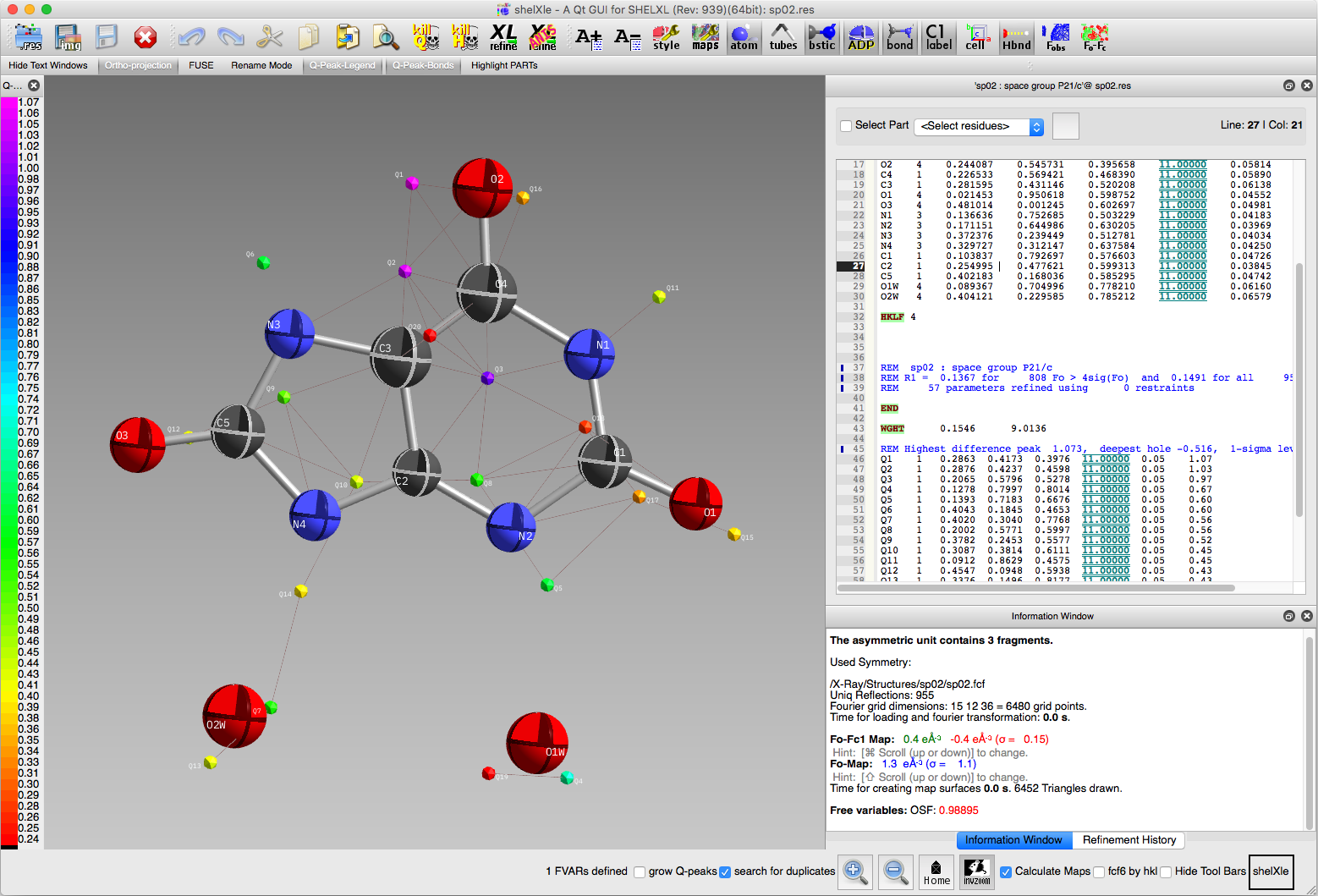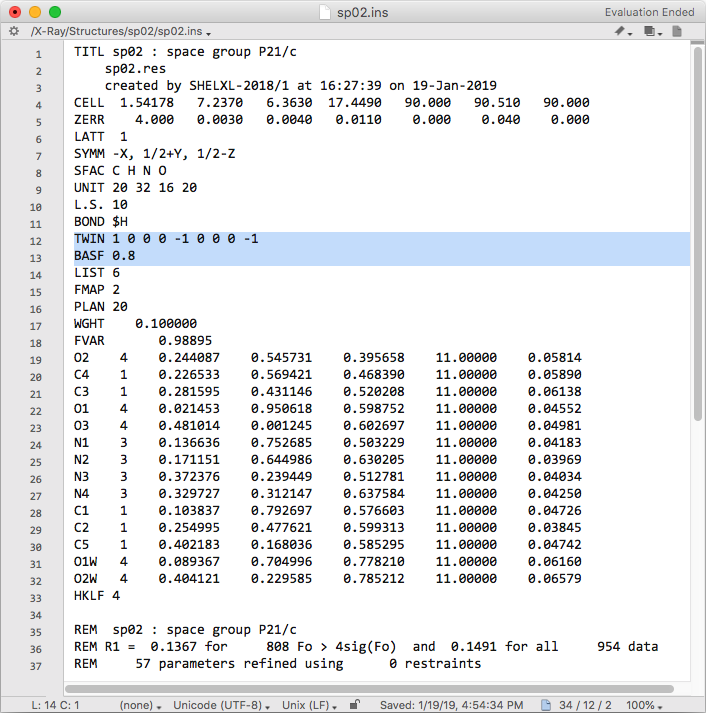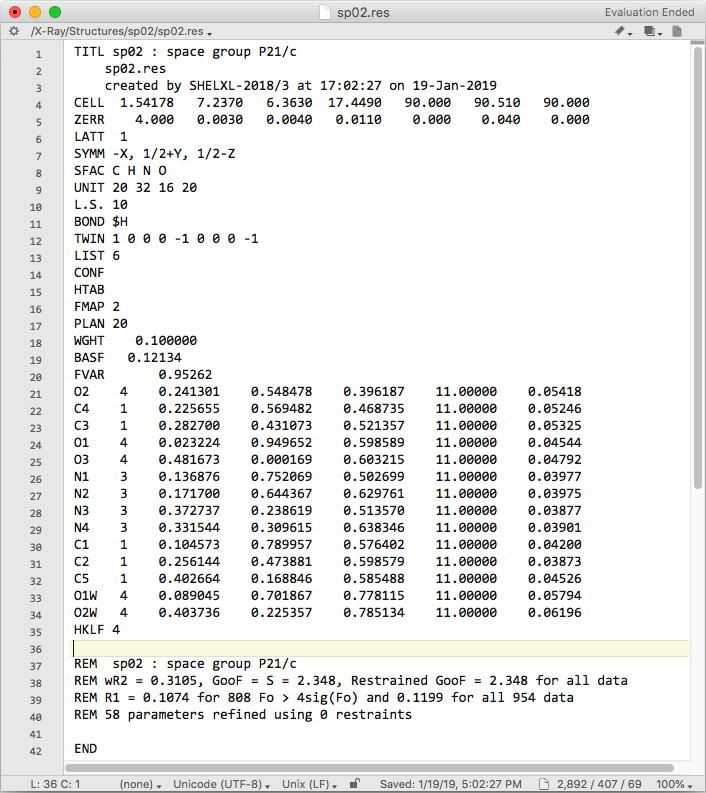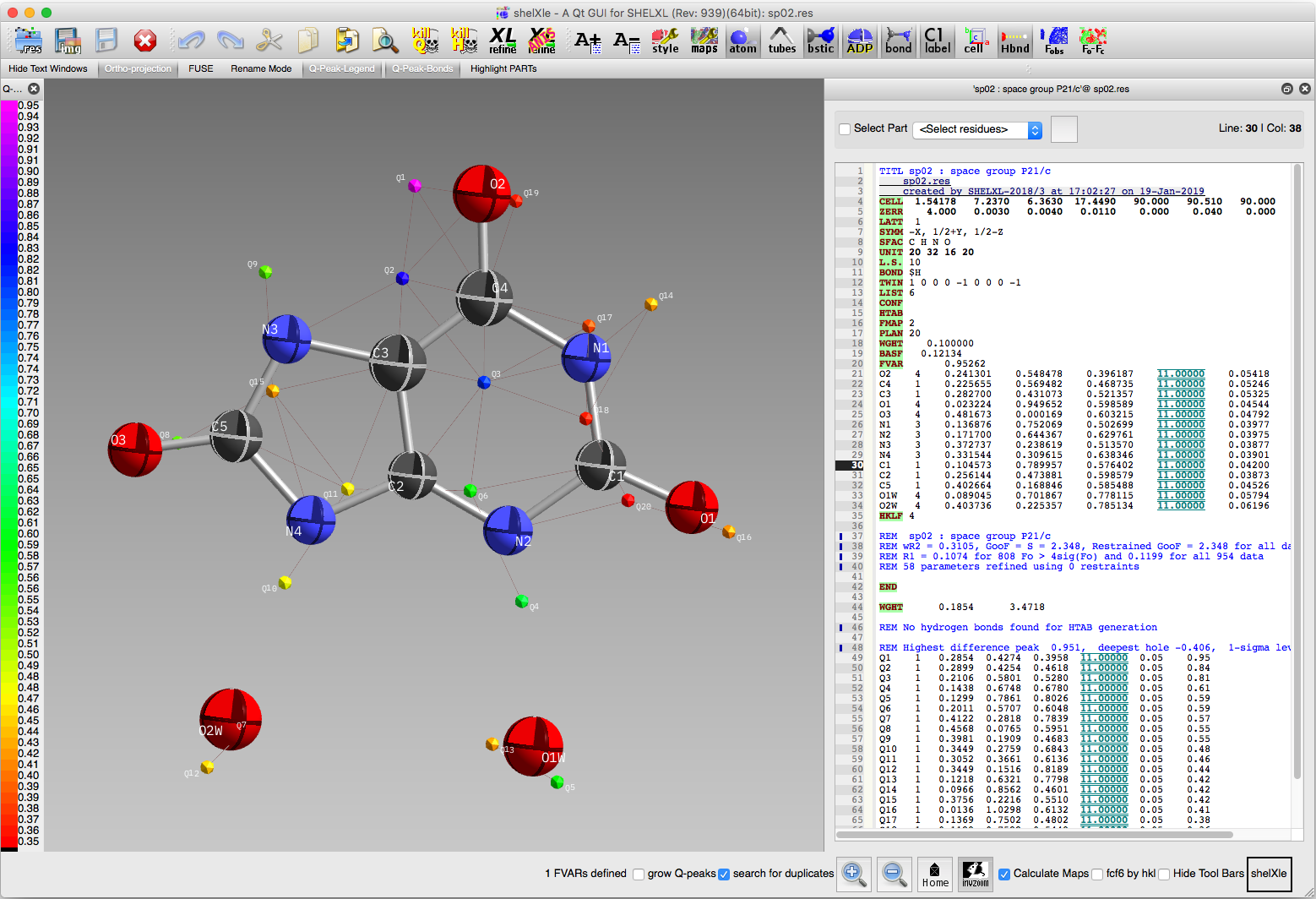
Twinning in uric acid dihydrate is by pseudo-merohedry, and occurs by virtue
of the monoclinic β angle being very close to 90°. It is easy to deal
with, just like the twinning
tutorial. We simply add an appropriate TWIN instruction and include
a guess for the fractional occupancy of the minor component as a BASF
(that's BAtch Scale Factor). The BASF will
refine to its optimum value, so your initial guess does not even need to be all
that good. To prove this point, let's set it to something ridiculous (e.g., 0.8
or 80%) just to see what happens. Here's the *.res file (in a separate text
editor, but you could just use the ShelXle text editor).

The TWIN and BASF commands are highlighted above. Go ahead and
run this through SHELXL; the results look like this:

Note that the BASF parameter, which represents the fraction of the
minor component, has refined down to about ~12%. Also note that the R-value
has dropped from almost 14% to about 11%. That's still not great of course,
but it's a real improvement. Here's what it looks like in ShelXle:

It doesn't look much different from the view prior to adding the twin operation.
Even the difference map peaks are in pretty much the same positions as before.
In the next section we'll use the SHELXL construct FRAG ... FEND
to incorporate a whole-molecule minor component of disorder into the model.
1) Solve structure using SHELXT and ShelXle.
2) Include twinning using TWIN and BASF in SHELXL.
3) Add disorder using FRAG...FEND in SHELXL.
4) Add restraints/constraints to enable stable refinement.
... More advanced stuff (only possible because β is very close to 90°)...
5) Tie the major/minor disorder components using FVARs.
2) Include twinning using TWIN and BASF in SHELXL.
3) Add disorder using FRAG...FEND in SHELXL.
4) Add restraints/constraints to enable stable refinement.
... More advanced stuff (only possible because β is very close to 90°)...
5) Tie the major/minor disorder components using FVARs.
Return to the first page of this tutorial
Return to the main Tutorials page or to the main X-Ray Lab page
Return to the main Tutorials page or to the main X-Ray Lab page